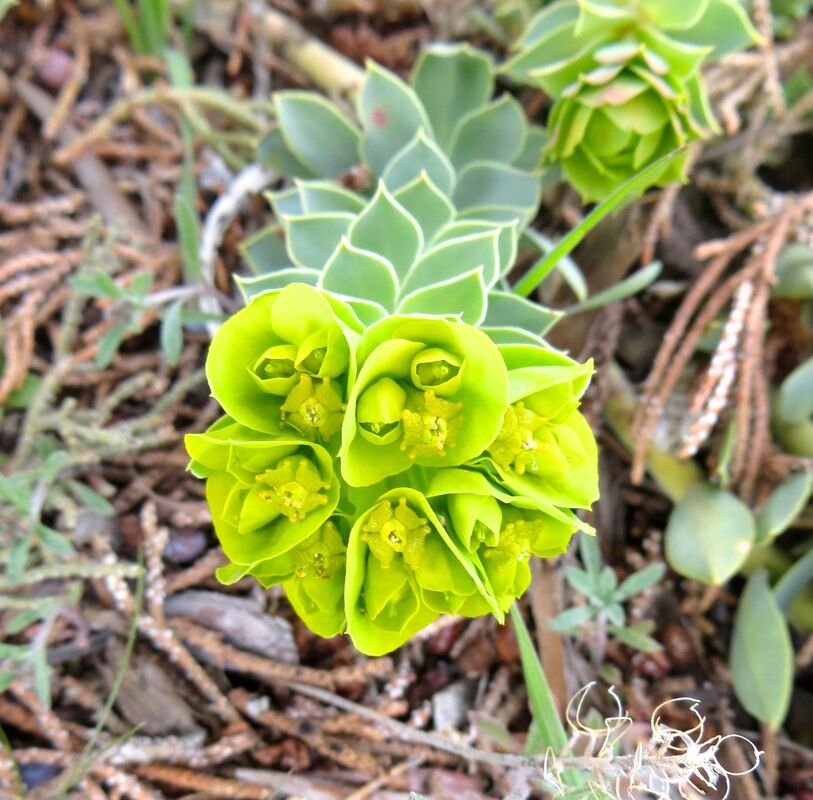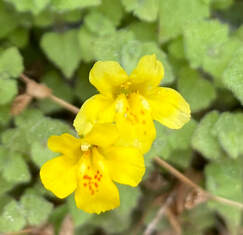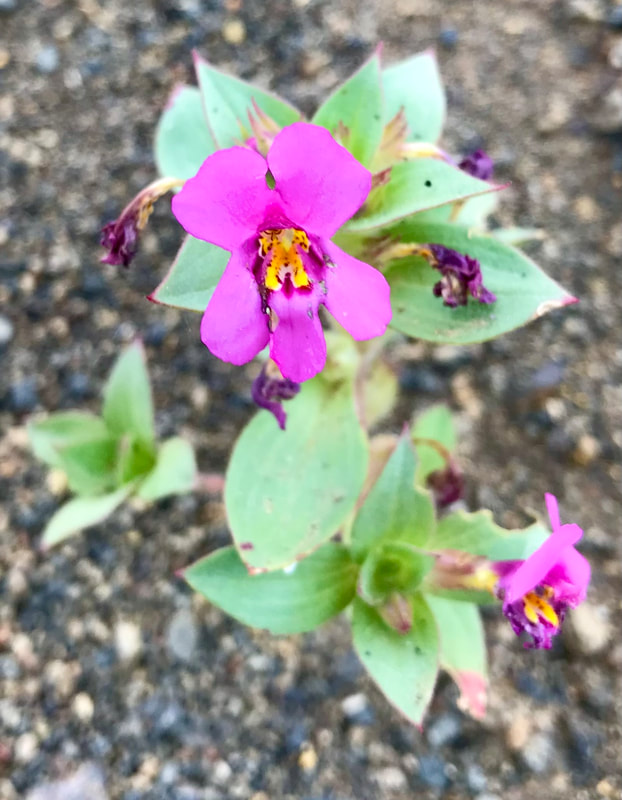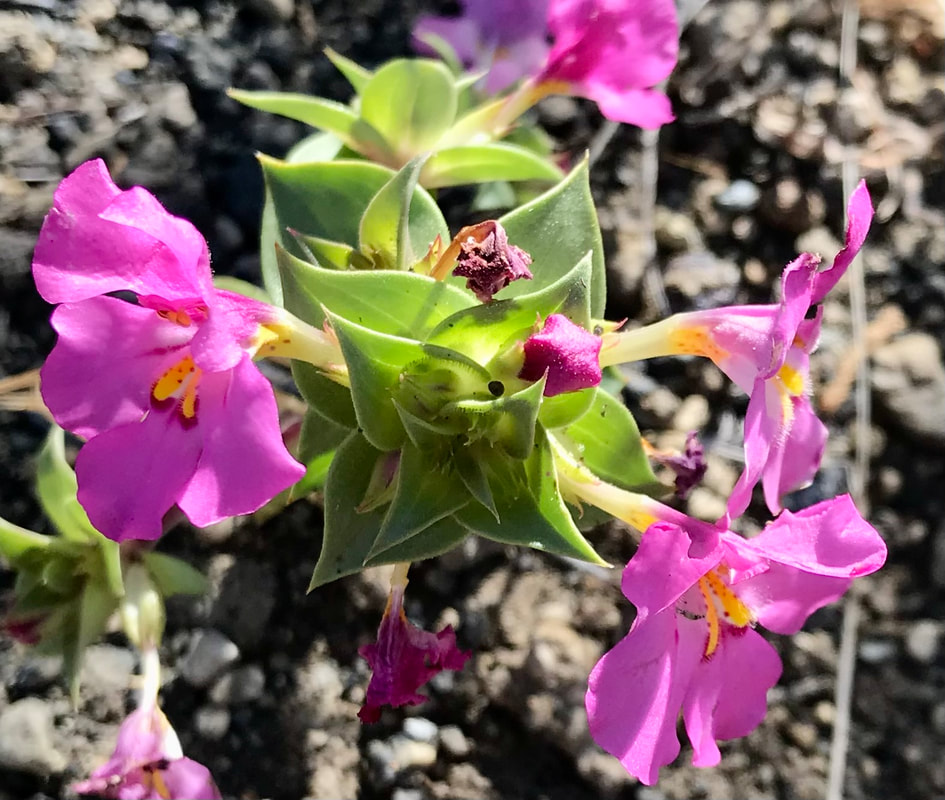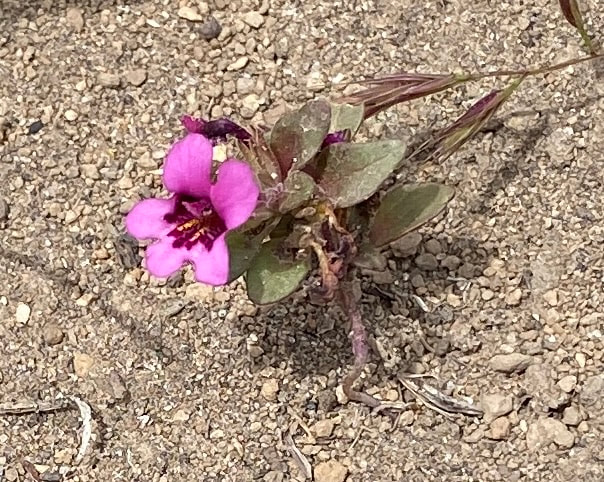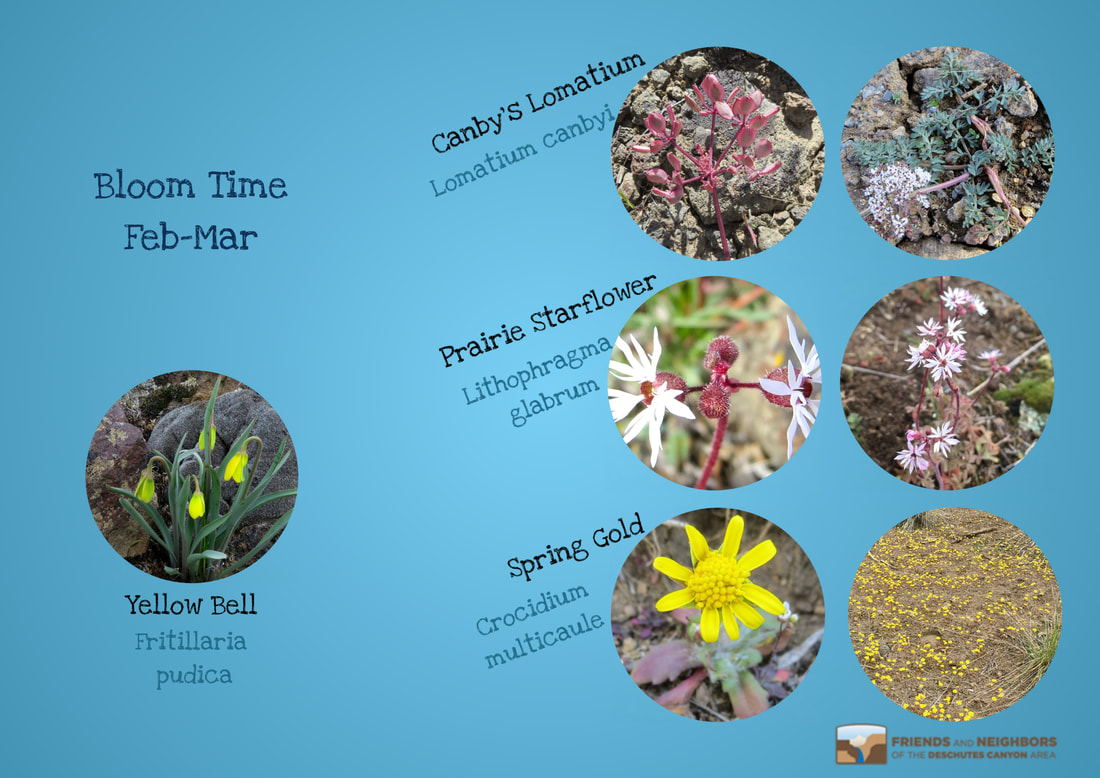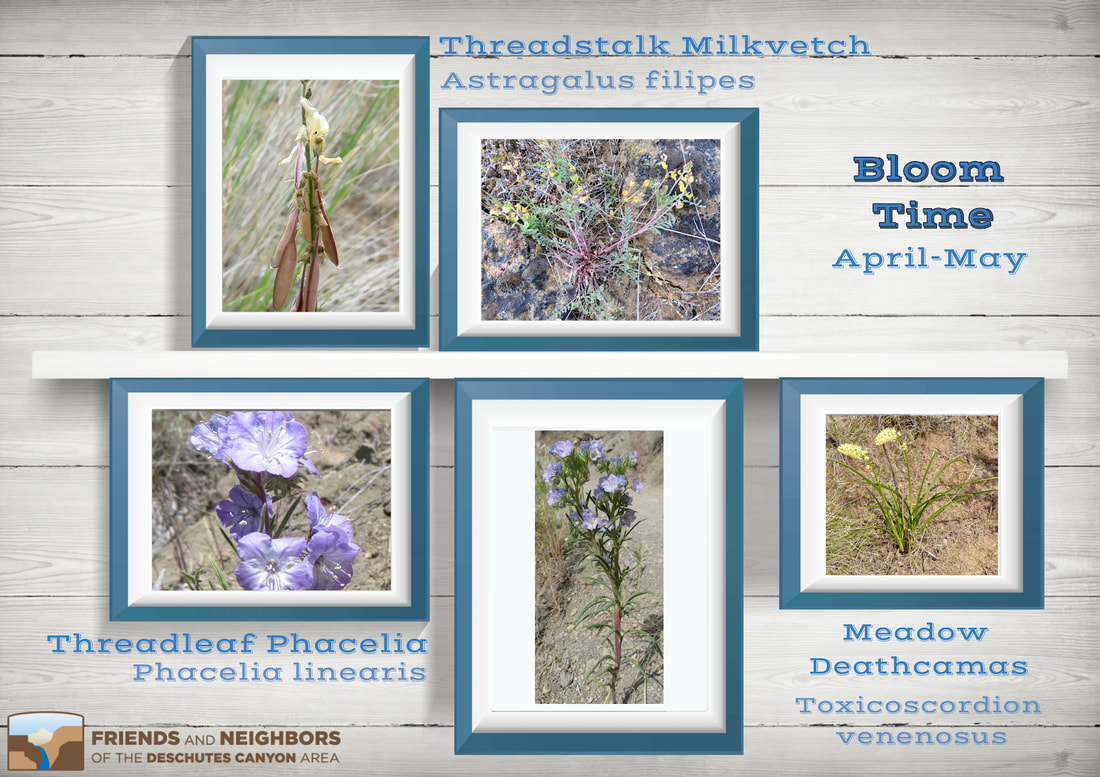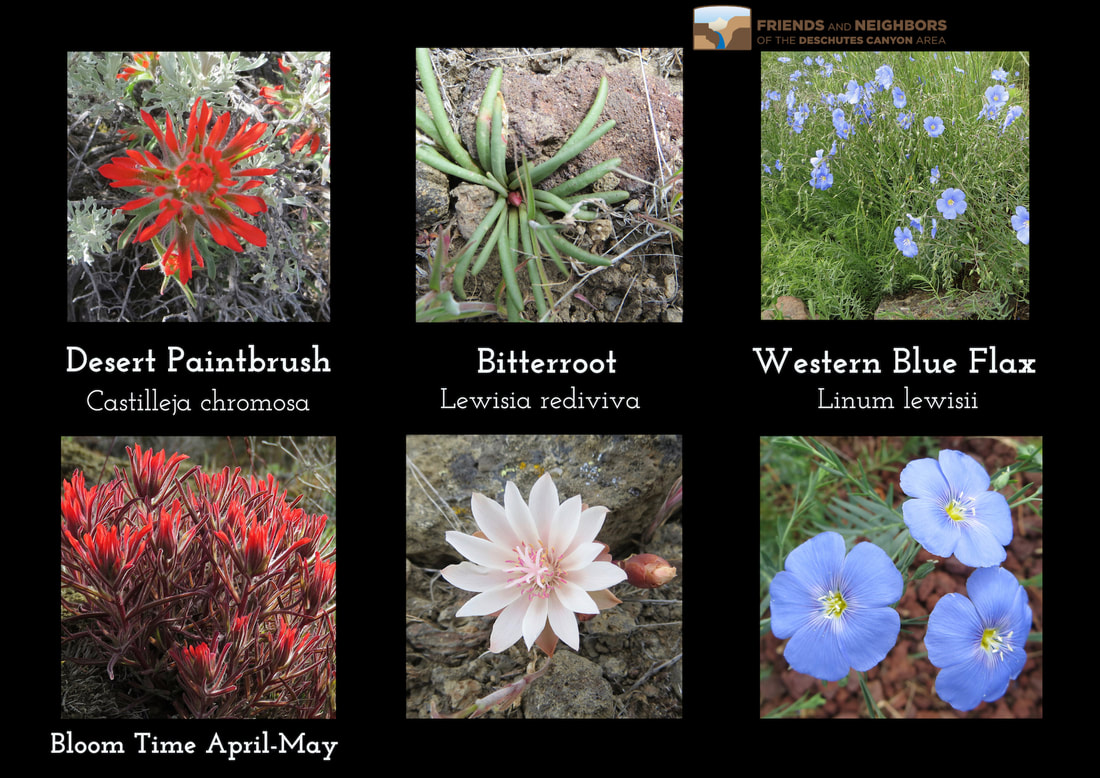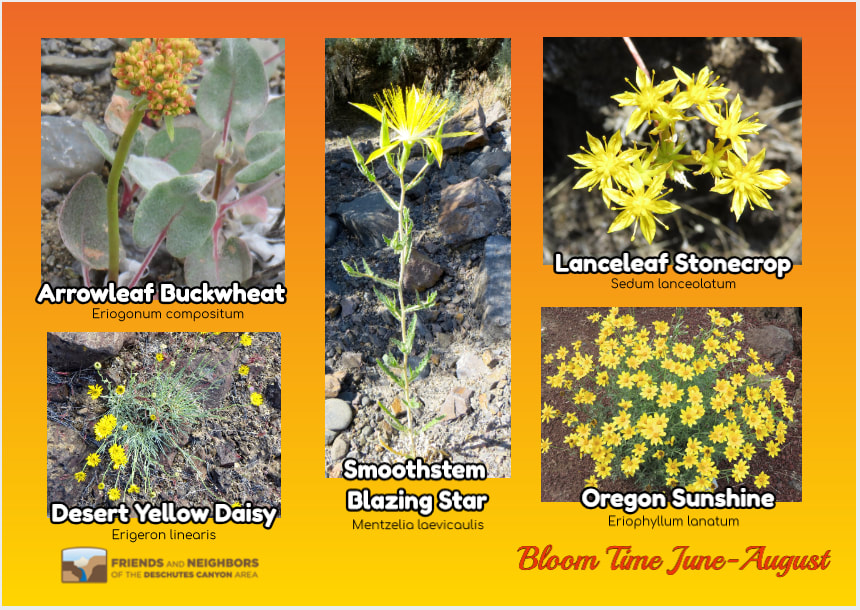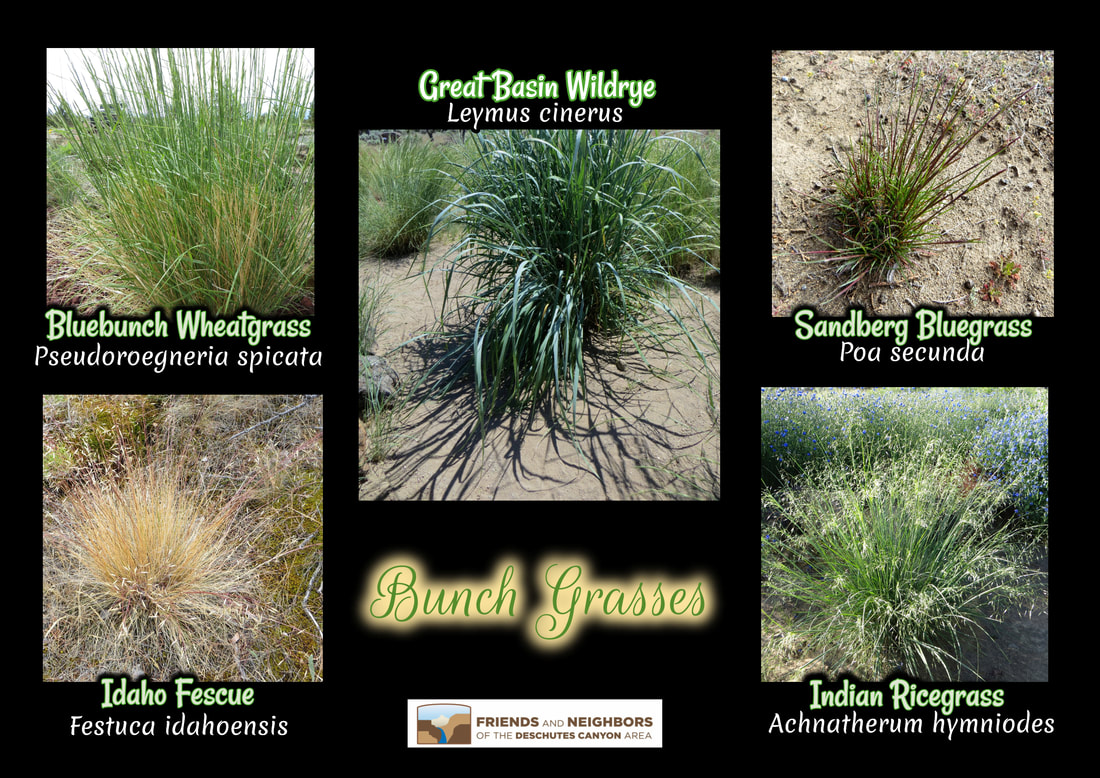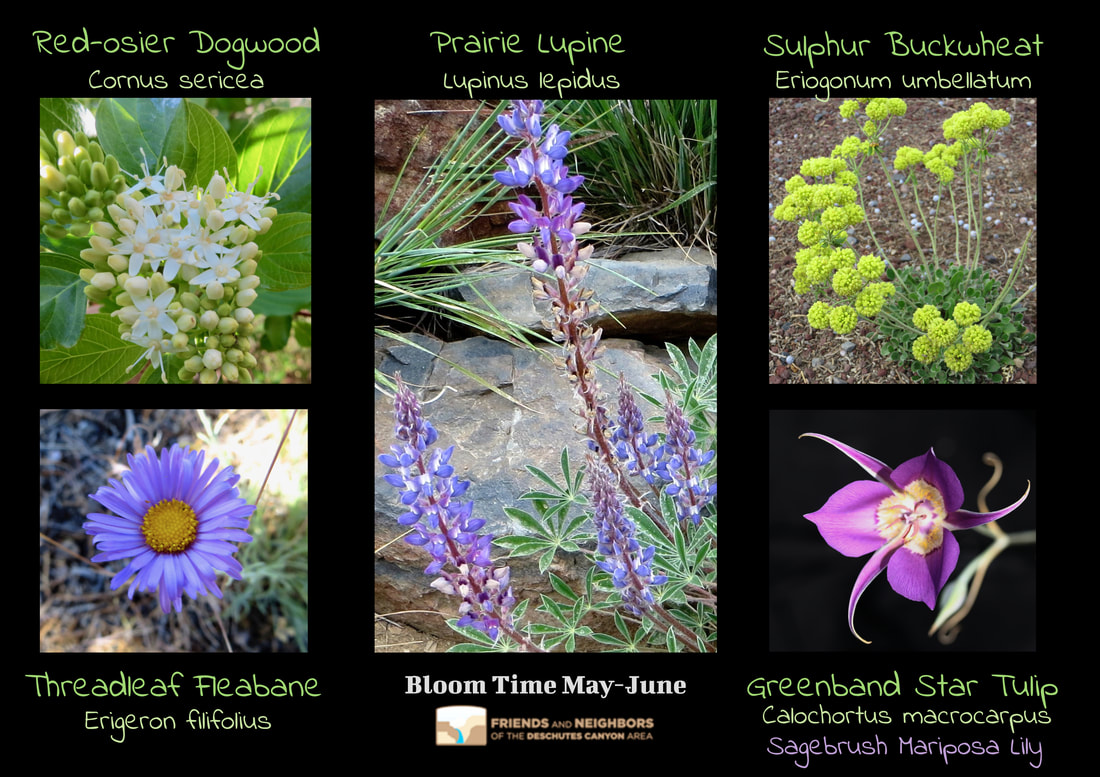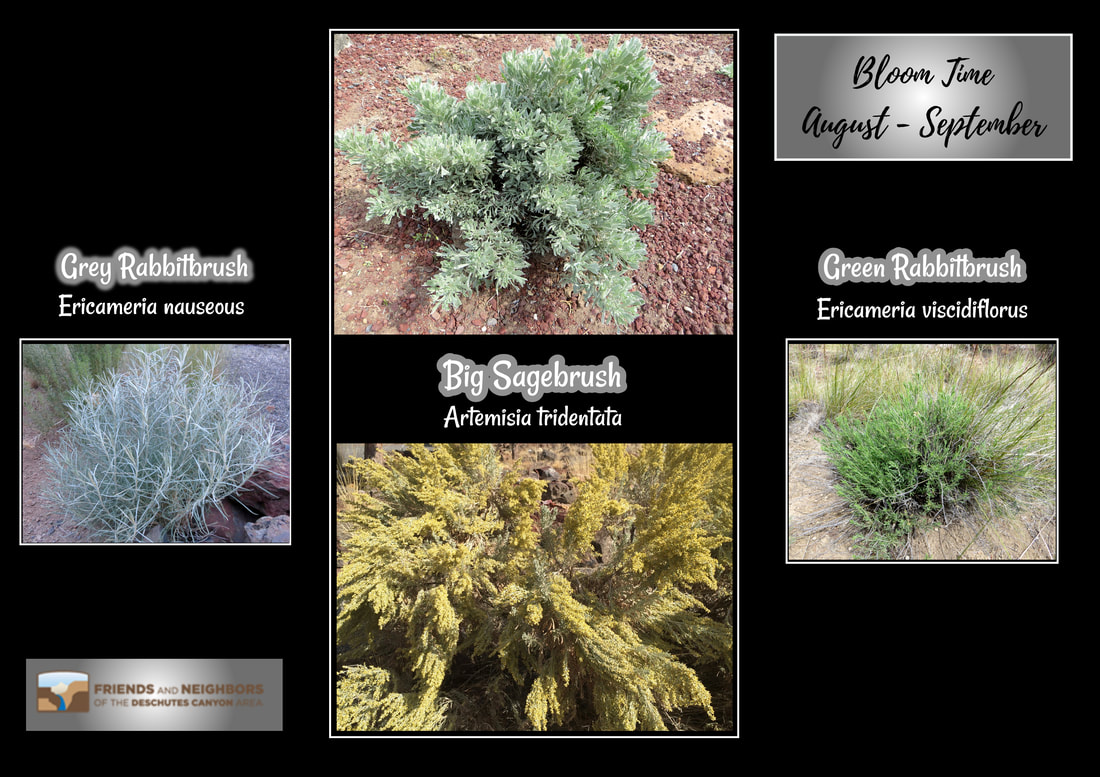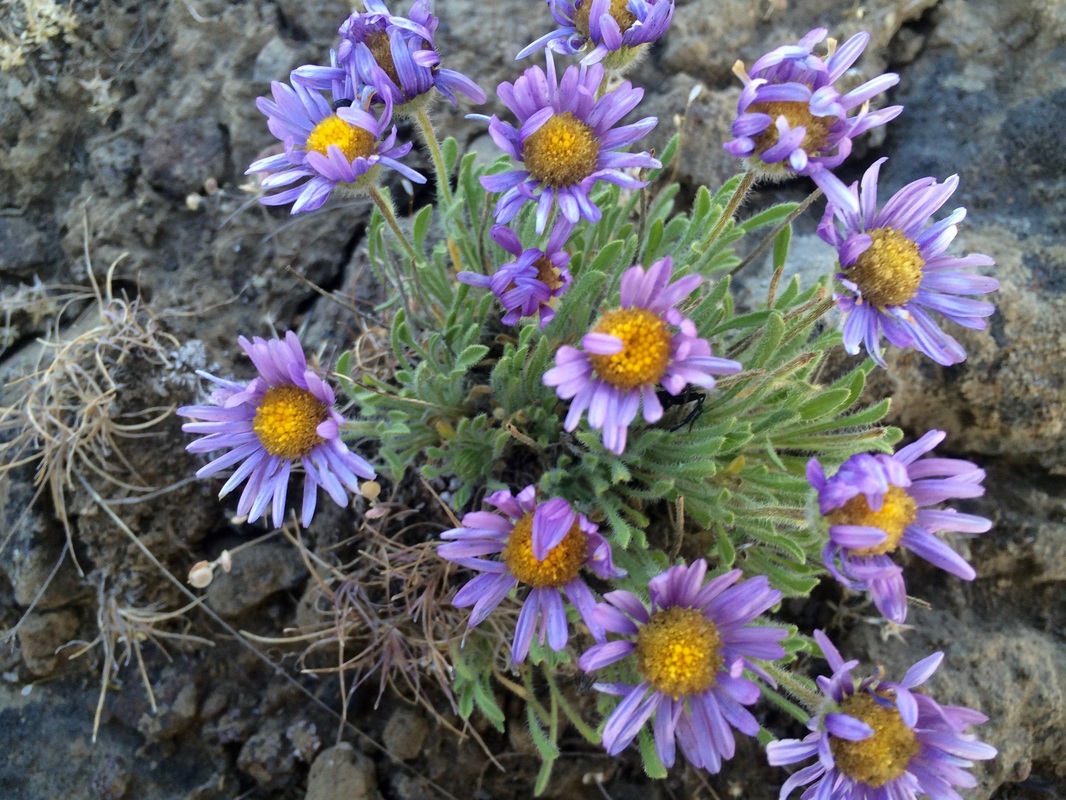Please scroll down to see the Native Plant and Weed of the month features!
Our Native Garden (near the CRR Admin Building) has undergone a major renovation!
Click HERE to learn more.
Click HERE to learn more.
Native Plant and Weed Guidebooks Available! Click on each title to order.
Our GUIDE TO NATIVE PLANTS OF THE DESCHUTES CANYON AREA by Marilynne Keyser is an expanded second edition of FANs highly successful 2017 book. It includes more than 130 common native plants that are found on the sagebrush plateau and in the river canyons where Deschutes, Jefferson and Crook counties meet. The color photographs, taken primarily by the the author, along with the plant descriptions are organized by taxonomic family. It includes a list of botanical terms and drawings and photographs of the parts of a flower and the parts of a grass to help you understand the descriptions.
The guide is designed to fit in your pocket or small pack. Use it to identify native shrubs, bunchgrasses and wildflowers that you see on the many trails in the canyons of the middle Deschutes and lower Crooked Rivers and the surrounding sagebrush plateau. Trail recommendations are included to help you find specific plant species.
Plant guide price is $15 for FANs members and $20 for nonmembers.
Our GUIDE TO COMMON WEEDS OF THE DESCHUTES CANYON AREA by Penny Radtke and Marilynne Keyser
Anyone striving to identify and eliminate unwanted and/or invasive plants will want this book! Includes photos and descriptions of many local weed species. This book features the same durable 8.5" x 4.25" spiral bound format as our popular Native Plant guide, making it easy and practical to carry in the field.
Weed guide price is $12 for FANs members and $15 for nonmembers.
The guide is designed to fit in your pocket or small pack. Use it to identify native shrubs, bunchgrasses and wildflowers that you see on the many trails in the canyons of the middle Deschutes and lower Crooked Rivers and the surrounding sagebrush plateau. Trail recommendations are included to help you find specific plant species.
Plant guide price is $15 for FANs members and $20 for nonmembers.
Our GUIDE TO COMMON WEEDS OF THE DESCHUTES CANYON AREA by Penny Radtke and Marilynne Keyser
Anyone striving to identify and eliminate unwanted and/or invasive plants will want this book! Includes photos and descriptions of many local weed species. This book features the same durable 8.5" x 4.25" spiral bound format as our popular Native Plant guide, making it easy and practical to carry in the field.
Weed guide price is $12 for FANs members and $15 for nonmembers.
If you would prefer to coordinate local delivery or pickup, thereby saving the shipping fee, please email Marilynne Keyser at [email protected].
Books are also available at most FANs programs and events, and at these independent, local bookstores:
Herringbone Books in Remond
Dudley’s Bookshop Cafe in Bend
Roundabout Books in Bend
Paulina Springs Books in Sisters
Bohemian Peddler’s Blackbird Tea & Tales in Madras
Bowman Museum in Prineville
Books are also available at most FANs programs and events, and at these independent, local bookstores:
Herringbone Books in Remond
Dudley’s Bookshop Cafe in Bend
Roundabout Books in Bend
Paulina Springs Books in Sisters
Bohemian Peddler’s Blackbird Tea & Tales in Madras
Bowman Museum in Prineville
|
Weed of the Month - June
By Penny Radtke, FANs Invasive Weed Consultant Mrytle Spurge (Euphorbia myrsinites) 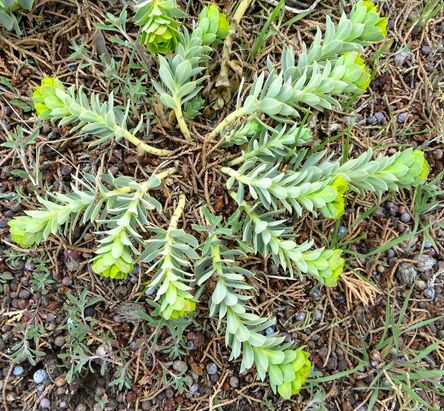
All that glitters is not Gold! And Myrtle Spurge is a good example of that. This handsome groundcover that is widely used locally in rock gardens has been in the news recently. You may have seen the story on KTVZ about its toxic and dangerous characteristics that are being highlighted by the OSU Extension Service. Here is the link: Invasive, noxious weed popping up in C. Oregon gardens prompts warning: Handle myrtle spurge with caution - KTVZ Ornamentals that stay put are not considered to be a problem, but this plant happens to be poisonous, and it doesn’t stay put! Myrtle Spurge is legendary for escaping home gardens and once it escapes it quickly crowds out native plants. In Jefferson, Deschutes, and Crook Counties, it is on the B-list of noxious weeds, which means: “Intensive containment, control and monitoring by the landowner is required.” All parts of Myrtle Spurge contain a caustic latex sap that is attractive to children, and can result in skin irritation, redness, swelling, blisters, and possibly anaphylactic shock. Ingesting the sap will cause nausea, vomiting, and diarrhea, and there is a possibility of blindness if the sap comes into contact with the eyes! Myrtle spurge is a perennial that blooms April to June. Flowers are small, surrounded by showy yellow bracts. It grows 6-14 inches tall, and has blue-green, fleshy, triangular-shaped leaves arranged in spirals around the stems. Hopefully, you are inspired to PURGE YOUR SPURGE! Small infestations can be controlled through multiple years of digging up at least 4 inches of the root, preferably in the spring before seeds are produced. BE SURE TO WEAR LONG SLEEVES, GOOD GLOVES, AND EYE PROTECTION. Bag all plant parts and dispose of them in the garbage--do not compost and DO NOT BURN! Myrtle spurge can also be effectively controlled with products containing 2,4-D and dicamba (i.e., Weed-B-Gon) applied in the fall, according to Jefferson County Weed Department. If you have questions or would like to schedule a weed consultation on your property, email me at: [email protected]. Consultations are free except for the cost of FANs’ book: Guide to Common Weeds of the Deschutes Canyon Area. |
Native Plant of the Month - July
by Marilynne Keyser, FANs Native Plant Coordinator Monkeyflowers! What is a monkeyflower and how did it get it’s name? I’ll answer the second question first—the 150 species around the world have a mouth-like shape and to some they resemble the face of a monkey. Monkeyflowers are small, low-growing incredibly colorful five-petaled tubular flowers in their own genetic family. Originally, all monkeyflowers were in a single genus, Minimus. The diversity among the 150 species is incredible and they were recently split into four separate genuses, with only one of species remaining in the original genus.
According to an August 29, 2019 article in Science by Elizabeth Pennisi: University of Washington plant molecular biologist H. D. "Toby" Bradshaw and his graduate student showed slides documenting as much floral diversity within a single monkeyflower species… as can be seen in the meadows and streambanks of the Cascades—all generated by mutating the genome of this one Mimulus species. We have three species here at Crooked River Ranch:
|
FANs Weed Team
Our Weed Team, directed by Penny Radtke provides programs that educate local residents about invasive weeds and the value of native plants in restoring land in the Deschutes Canyon Area and nearby private lands. This team engages in restoration projects in the Deschutes Canyon Area and provides advice on restoration projects on private lands close to these public lands.
Learn about Native Plants and Invasive Weeds on Your Property
Our “Weed Team” offers private consultations for Crooked River Ranch property owners who want to know what native plants and invasive weeds are growing on their property.
FANs requests a consultation donation of $30 for FANs members and $40 for nonmembers. This fee includes a copy of our new book, Guide to Common Weeds of the Deschutes Canyon Area.
Email Penny at [email protected] or [email protected] to schedule a consultation.
FANs requests a consultation donation of $30 for FANs members and $40 for nonmembers. This fee includes a copy of our new book, Guide to Common Weeds of the Deschutes Canyon Area.
Email Penny at [email protected] or [email protected] to schedule a consultation.
Computer Wallpaper Collection
FANs member Diane Nunley has created photo wallpaper that you can download and save to your computer. Use these beautiful photos to identify native plants by common and scientific names.
We thank Diane for developing this great learning tool.
Simply click on "Download File" to save the images. Have fun learning the names of native plants!
FANs member Diane Nunley has created photo wallpaper that you can download and save to your computer. Use these beautiful photos to identify native plants by common and scientific names.
We thank Diane for developing this great learning tool.
Simply click on "Download File" to save the images. Have fun learning the names of native plants!
|
| ||||
|
| ||||
|
| ||||||
Visit the Native Plant Interpretive Garden at Crooked River Ranch
click here for more information
click here to print a native plant garden checklist
Deschutes Canyon Area Native Plant Checklist
|
Would you like to discover native plants while hiking in the Deschutes Canyon Area? Print out this Deschutes Canyon Area Native Plant Checklist and take it along with you. Sagebrush Country by Ronald J. Taylor and Wildflowers of the Pacific Northwest by Mark Turner are two books with good illustrations that can help you identify native plants on our local public lands.
|

